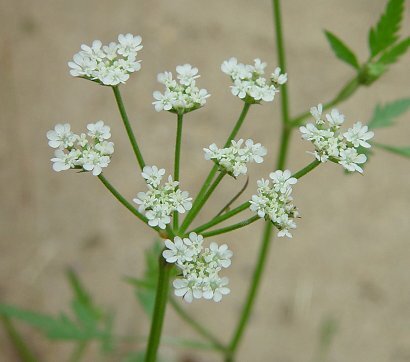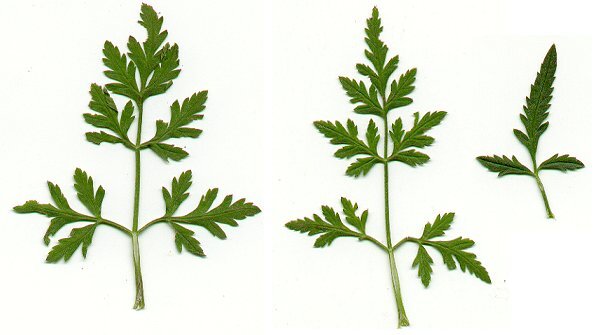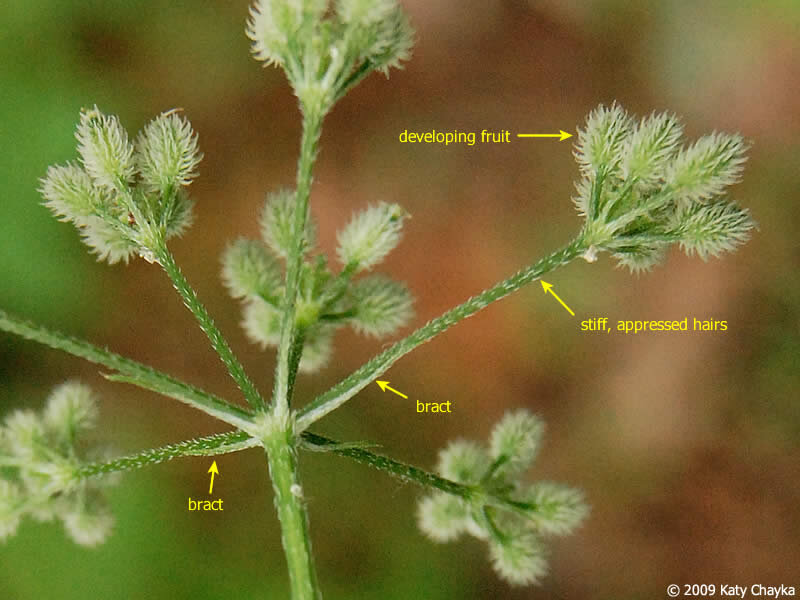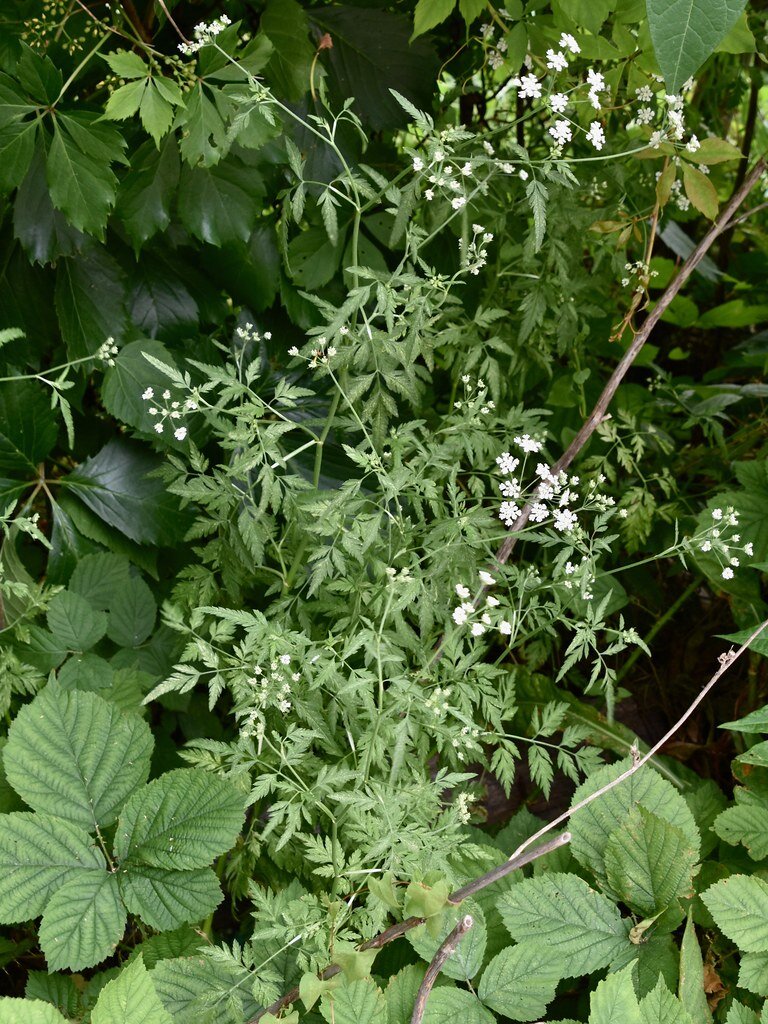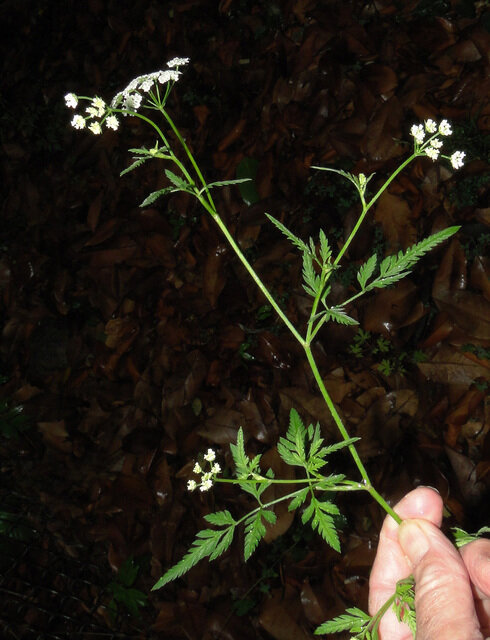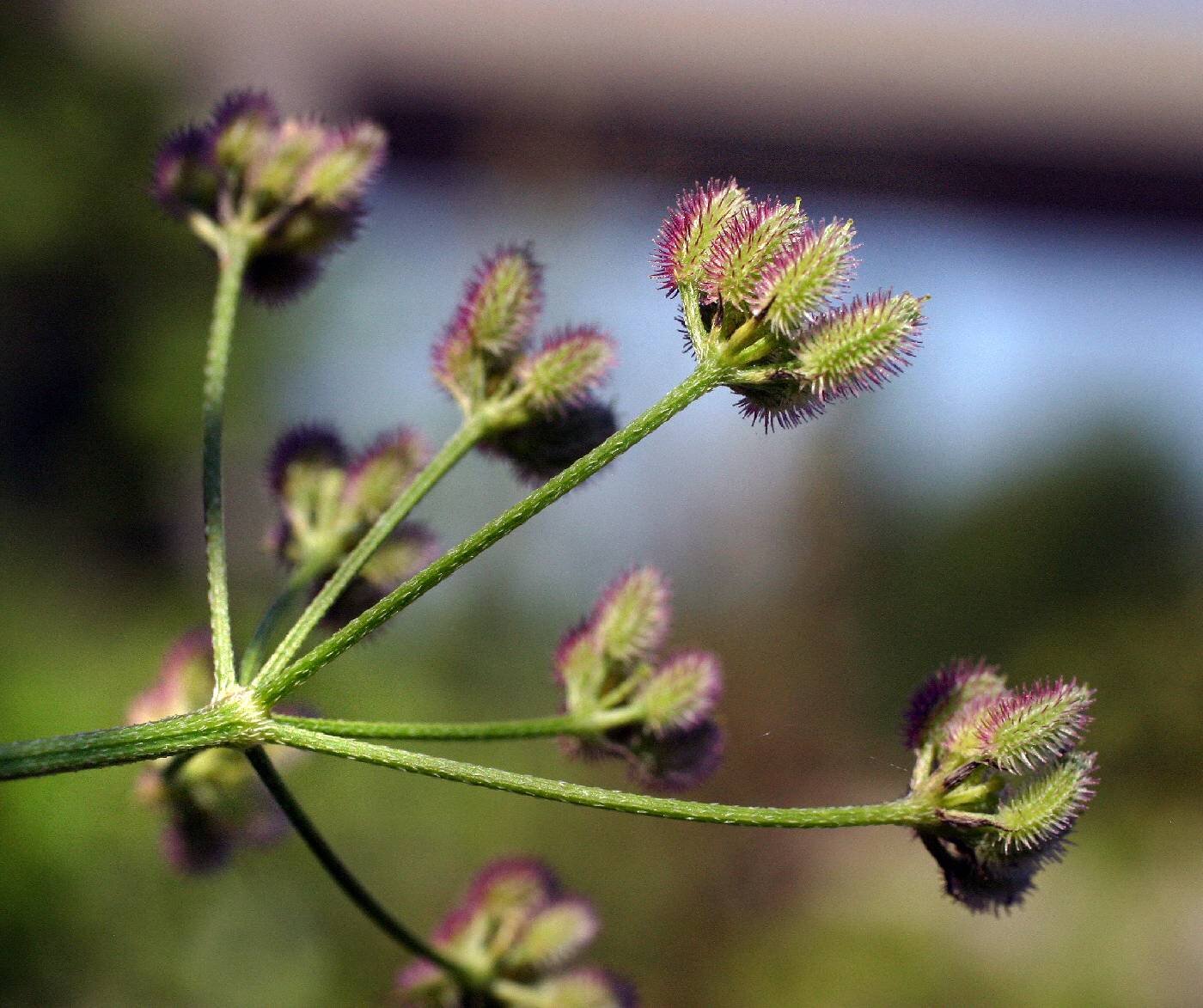August 2021 Invasive Plant of the Month
SICIM Email
Japanese Hedge Parsley (Torilis japonica) & Spreading Hedge Parsley (Torilis arvensis)
Both Japanese hedge parsley and spreading hedge parsley are members of the carrot family (Apiaceae) and were introduced from Europe and Asia in the early 20th century. They may have been unintentional introductions given their bristly, clinging fruits, or a deliberate introduction for medicinal purposes. Spreading hedge parsley has been reported as invasive in most of the states other than the northern Great Plains. Japanese Hedge Parsley has been reported as invasive in Midwest and Eastern states, as well as far western states. These two similar species are often misidentified as each other, which has led to confusion over their real ranges.
IDENTIFICATION & BIOLOGY: Both hedge parsleys generally function as biennials in the Midwest, growing 2-4 feet tall during their second year of growth. The leaves are fern-like, alternate, divided pinnately, and have very slim petioles that support each leaf. The plants flower in their second year, producing white, five-petaled flowers in multiple broad domed umbels in June-August. Japanese hedge parsley can be distinguished from spreading hedge parsley by having 2 to 8 linear bracts at the base of each compound umbel while spreading hedge parsley usually has no bracts below compound umbels, though sometimes there is a single linear bract. In addition, Japanese hedge parsley has hooked tips on the bristles of its seeds. The flowers develop into bristly fruits that turn brown when mature and are easily spread by catching on clothing or fur. Induced dormancy is exhibited in seeds, meaning they will potentially continue to germinate over a long period of time.
LOOK-A-LIKES: At first glance, the hedge parsleys look like small Queen Anne’s lace plants. However, they are smaller, shorter plants that bloom earlier in the summer than Queen Anne’s lace. In addition, fine white hairs cover the leaves and stems of both hedge parsleys while Queen Anne’s lace leaves are nearly hairless.
HABITAT & DISTRIBUTION: Both hedge parsleys are commonly found in old fields, roadsides, and other edge habitats. However, they can also be found in high quality grasslands and savannas. Both species have been found in scattered counties throughout the state, though confusion between the two species may make the current ranges unreliable. Where it occurs, it can become locally common and form monocultures.
ECOLOGICAL THREAT: No studies have been found on the hedge parsley’s impact on native plant communities, but it appears to get a foothold in more disturbed areas, then invade more high-quality plant communities, displacing native plants in the process.
CONTROL:
Prevention: Be sure to remove any seeds from clothes keep from spreading hedge parsley into new areas.
Manual: Can be effective for single plants or small infestations because of their small root system. Hand pull seedlings in spring while soil is moist, before they start producing seeds later in the season. Alternately, cut the taproot with a sharp shovel 1-2” below the soil surface. If flowers are present, bag and dispose of in a landfill.
Mechanical: Mowing or disking at flowering stage can provide some control, though a second treatment for resprouting is usually necessary. Care must be taken not to mow when mature seeds are present as this will spread the seed.
Chemical: Metsulfuron (Escort XP; Ally XP) at 0.04 oz/gal applied to rosettes in the fall or spring, or to bolting plants is quite effective. Triclopyr (Garlon 4; Element 4; Garlon 3A, Element 3A) at 1-2% applied per the same timing is almost as effective.
IMPORTANT: The pesticide label is the law! When using any chemical control, always read the entire pesticide label carefully, follow all mixing and application instructions and use all personal protective gear and clothing specified. Contact the Office of Indiana State Chemist (OISC) for additional pesticide use requirements, restrictions or recommendations.
Maintenance: Follow-up treatments will be required, as seeds already present in the soil will sprout.
REFERENCES & OTHER RESOURCES:
Baskin, J.M. and C.C. Baskin. 1975. Ecophysiology of seed dormancy and germination in Torilis japonica in relation to its life cycle strategy. Bulletin of the Torrey Botanical Club. 102(2). P. 67-72.
California Invasive Plant Council (Cal-IPC). https://www.cal-ipc.org/plants/profile/torilis-arvensis-profile/
Gibson, R. H., Nelson, I. L., Hopkins, G. W., Hamlett, B. J., Memmott, J. 2006. “Pollinator webs, plant communities and the conservation of rare plants: arable weeds as a case study”. Journal of Applied Ecology. 43 (2). P. 246-257.
Hilty, J. 2013. “Illinois Wildflowers. Common Hedge Parsley”. http://www.illinoiswildflowers.info/weeds/plants/hdg_parsley.htm. (Web Site Accessed on: June 8, 2021).
Invasive Plant Atlas. https://www.invasiveplantatlas.org/subject.html?sub=12275
Minnesota Wildflowers. https://www.minnesotawildflowers.info/flower/japanese-hedge-parsley
Moran, V. 2007. “Torilis-The Guest From Hell”. http://knowyournature.wordpress.com/2007/08/08/torilis-the-guest-from-hell/ (Web Site Accessed on: June 8, 2021).
North Carolina Extension Gardener Plant Toolbox. https://plants.ces.ncsu.edu/plants/torilis-arvensis/
Panke, B. and M. Renz. 2012. Hedge-parsleys (Torilis spp.). University of Wisconsin – Cooperative Extension. 2 pp. http://learningstore.uwex.edu/Assets/pdfs/A3924-08.pdf (Web Site Accessed on Aug. 20, 2018)
Sheehan, M. 2007. Wisconsin Invasive Plant Assessment for Torilis japonica. http://dnr.wi.gov/topic/Invasives/documents/classification/LR_Torilis_japonicus.pdf. (Web Site Accessed on: June 8, 2021).
Tenaglia, D.. Missouri Flora Webpage 2004. Torilis japonica. http://www.missouriplants.com/Torilis_japonica_page.html. (Web Site Accessed on: June 8, 2021).
Texas Invasives. https://texasinvasives.org/plant_database/detail.php?symbol=TOAR
USDA, NRCS. 2007. The PLANTS Database (plants.usda.gov, 12 June 2013). National Plant Data Center, Baton Rouge, LA 70874-4490 USA.
Weed Control in Natural Areas in the Western United States. https://wric.ucdavis.edu/information/natural%20areas/wr_T/Torilis.pdf
Wikipedia. https://en.wikipedia.org/wiki/Torilis_japonica#cite_note-WDNR-3
Wisconsin Department of Natural Resources. 2012. “ Invasive Species”. https://dnr.wi.gov/topic/invasives/fact/japanesehedgeparsley.html (Web Site Accessed on: August 16, 2018).
LOOK-A-LIKE REFERENCES:
#JapaneseHedgeParsley #SpreadingHedgeParsley #Torilisspecies #IndianaInvasiveSpecies #IndianaInvasivesInitiative

